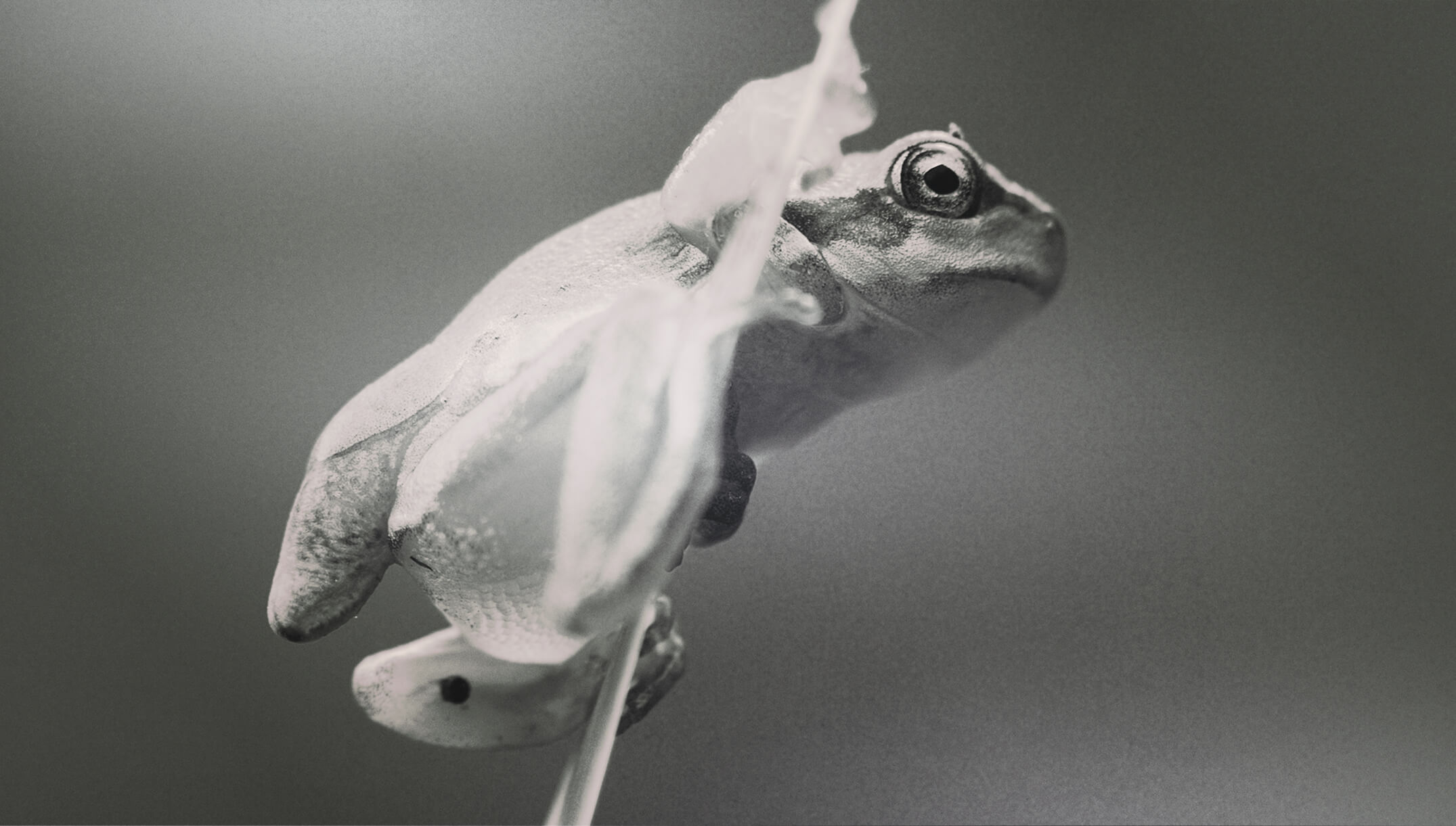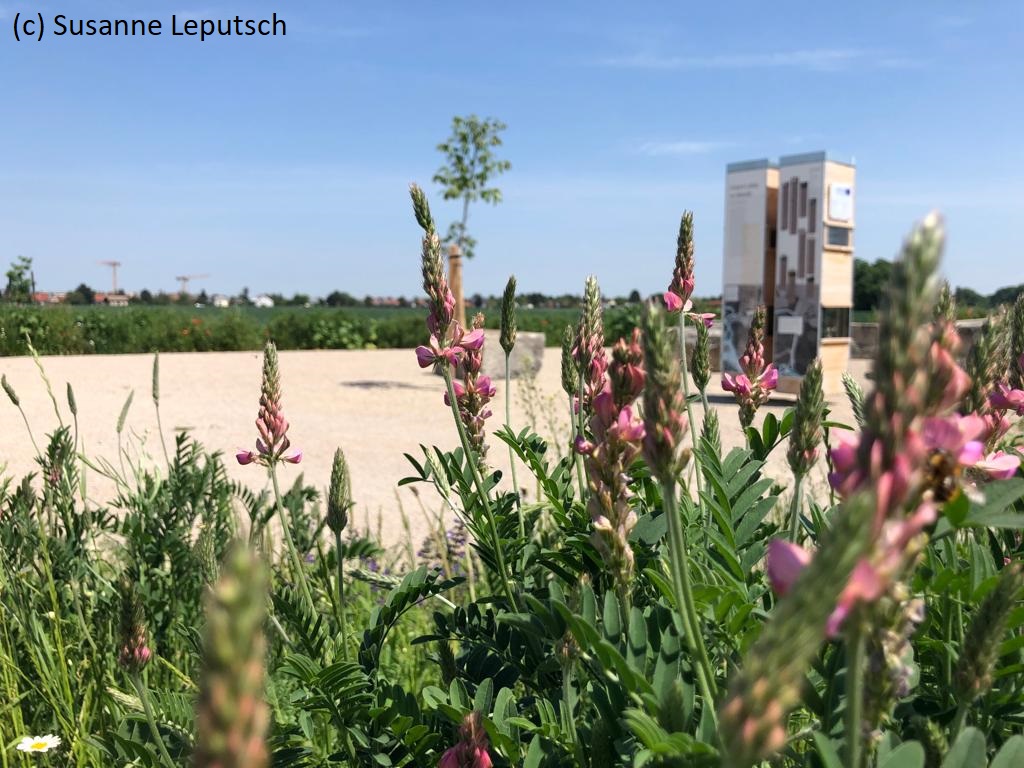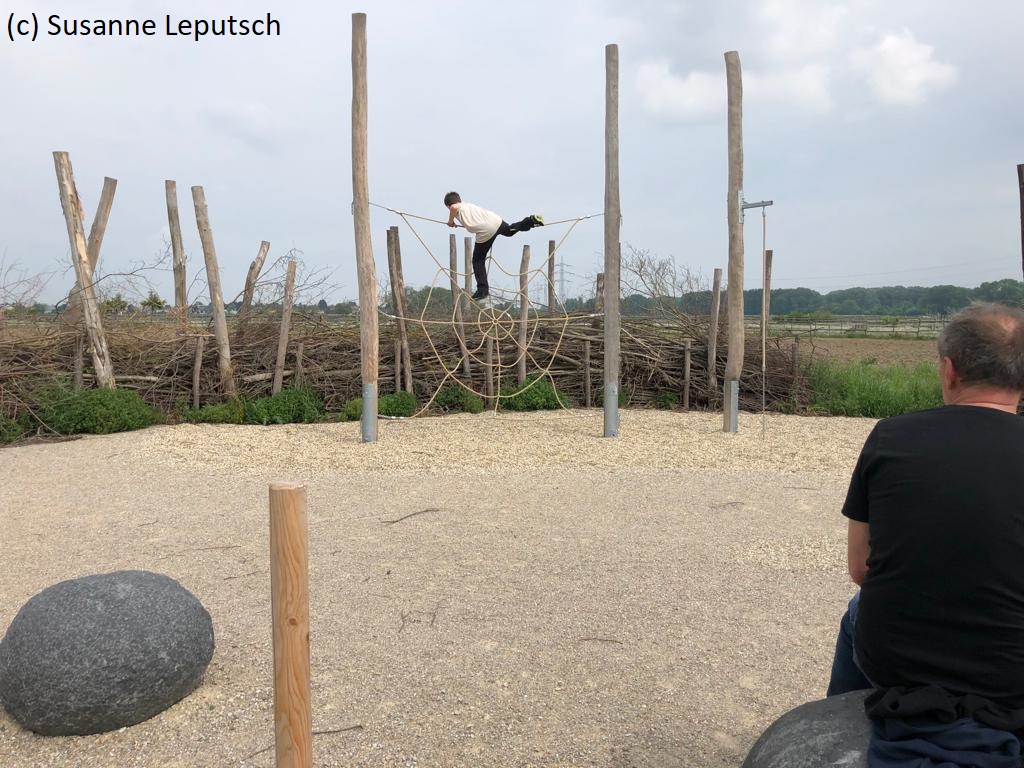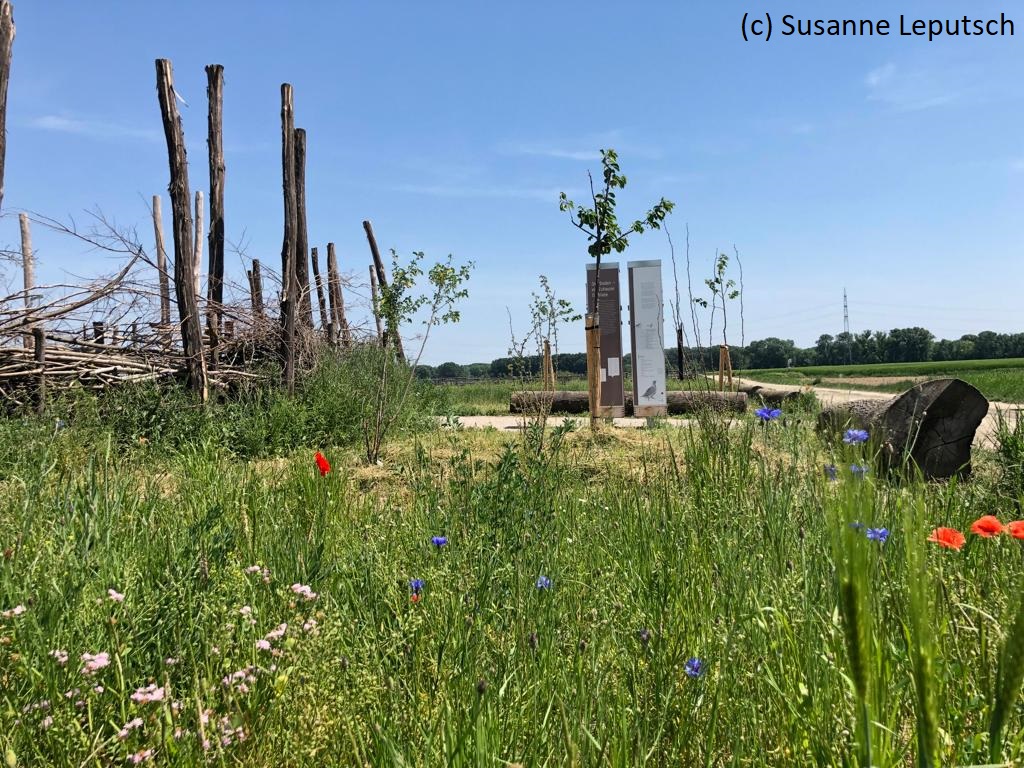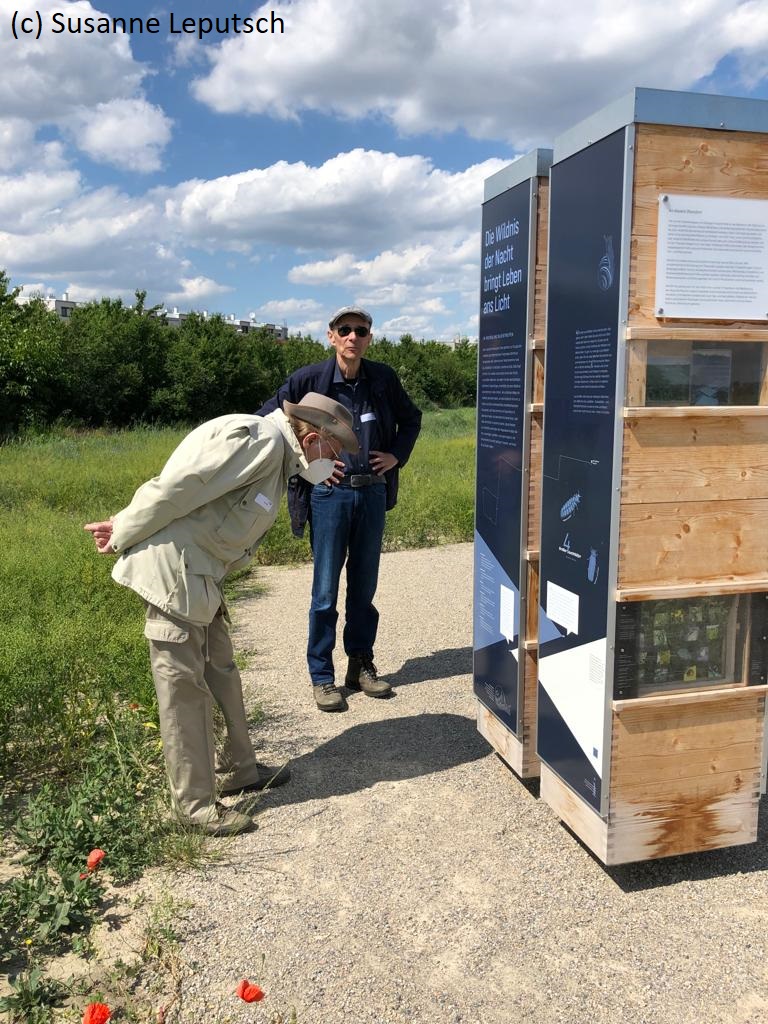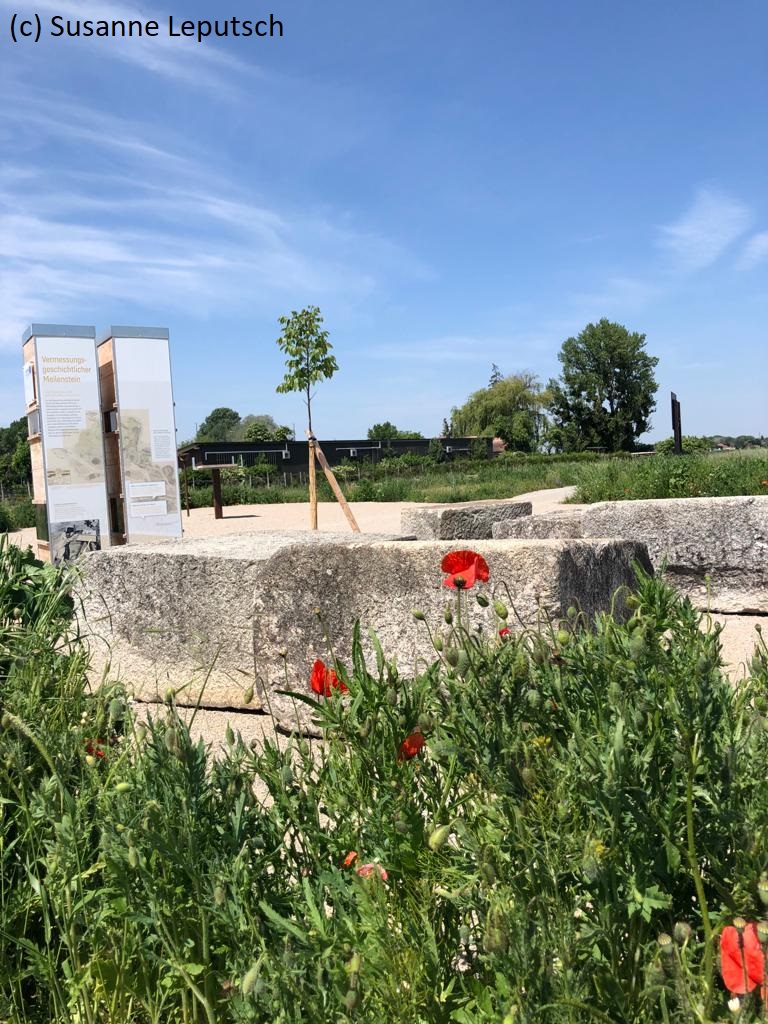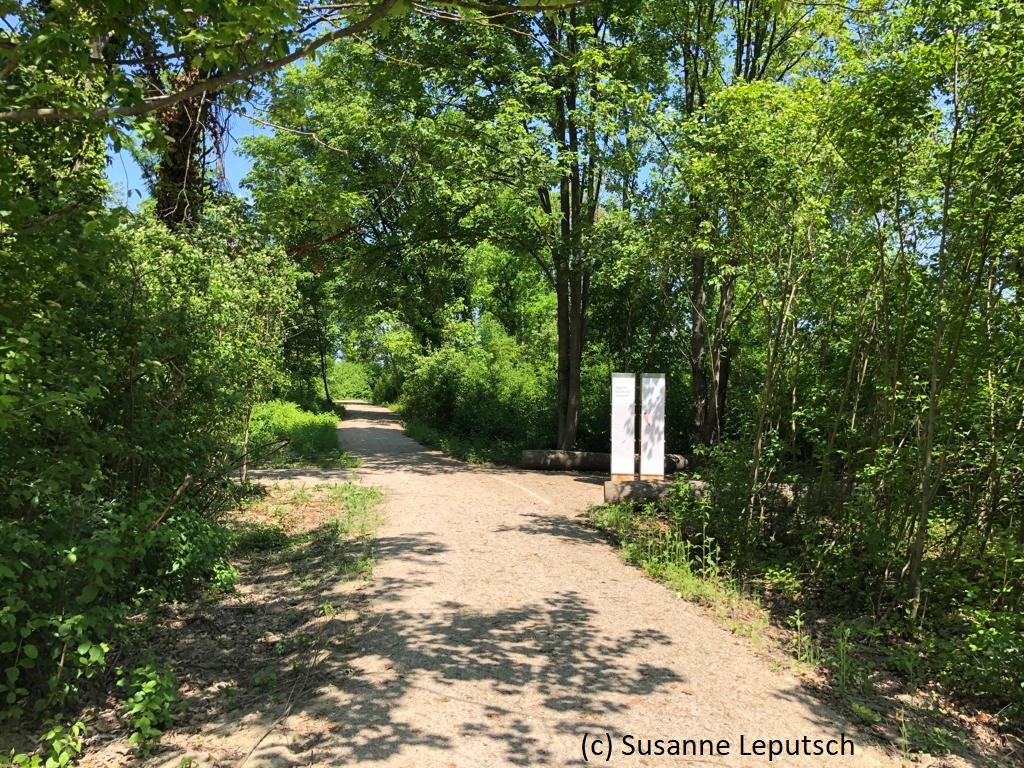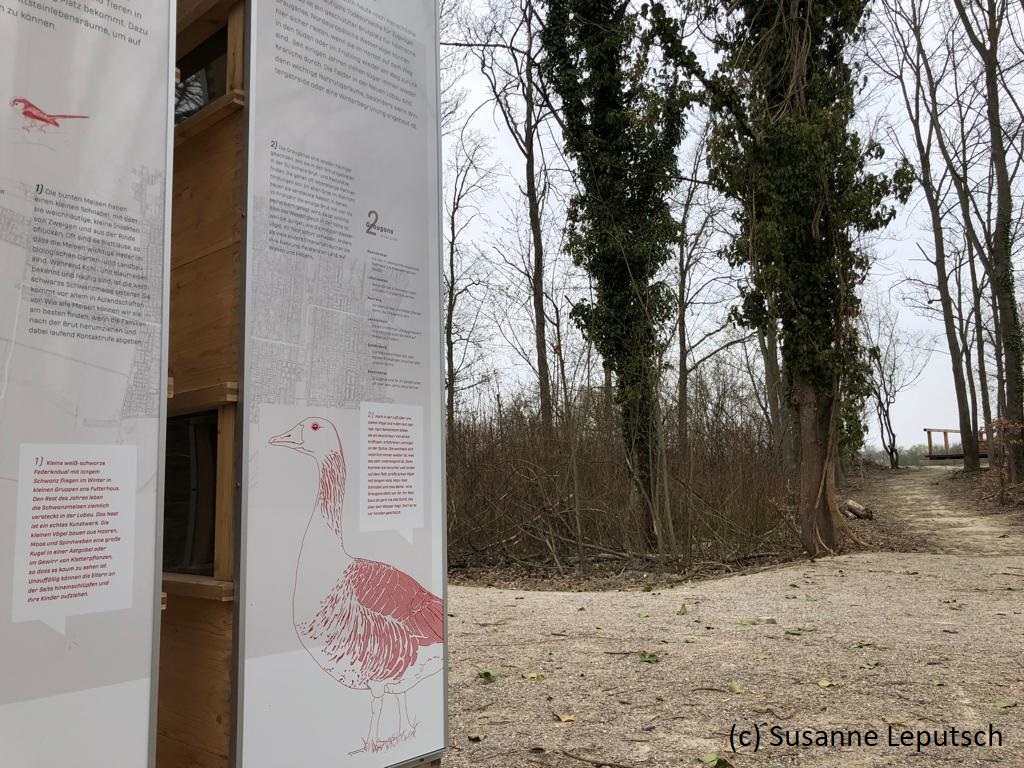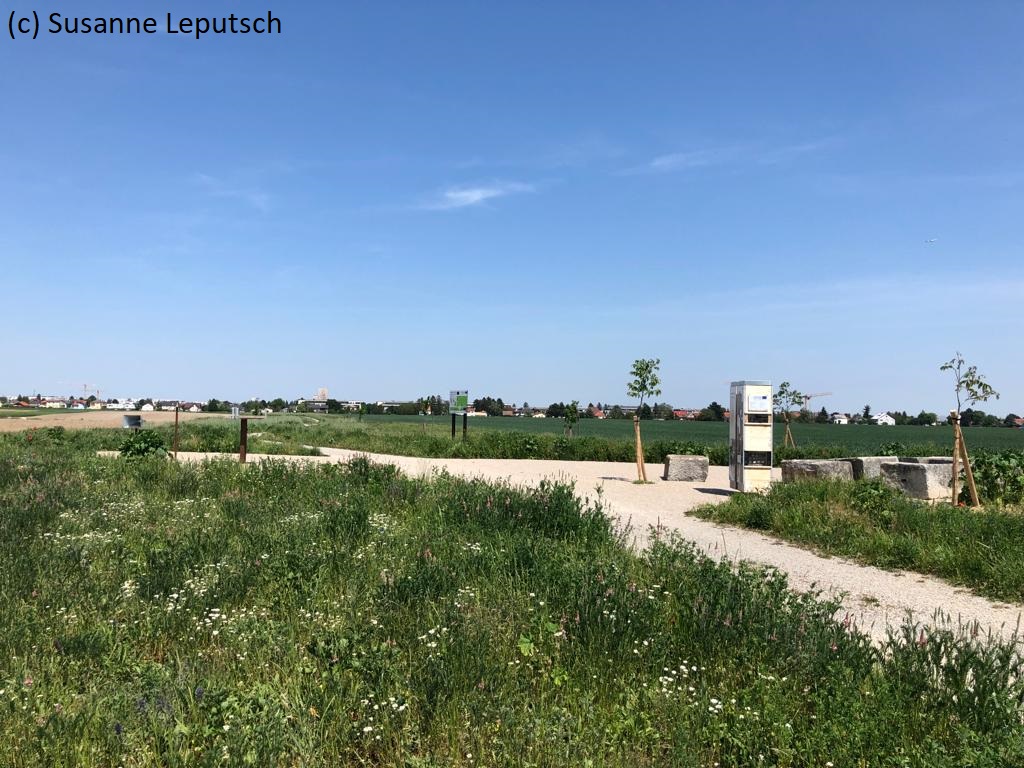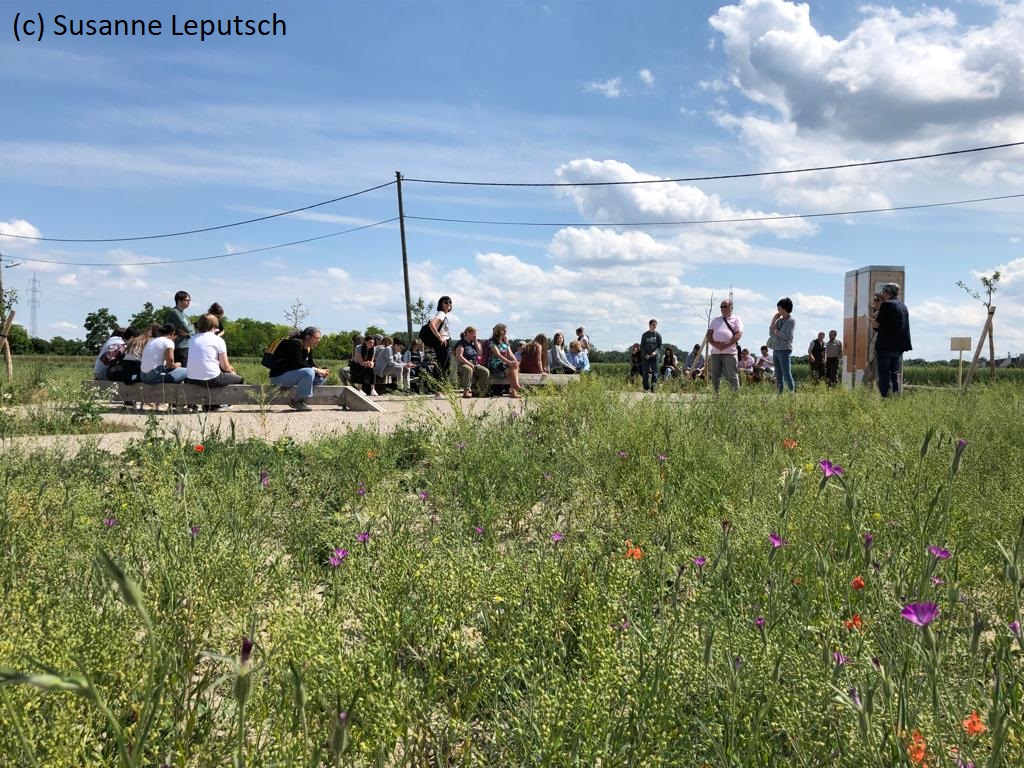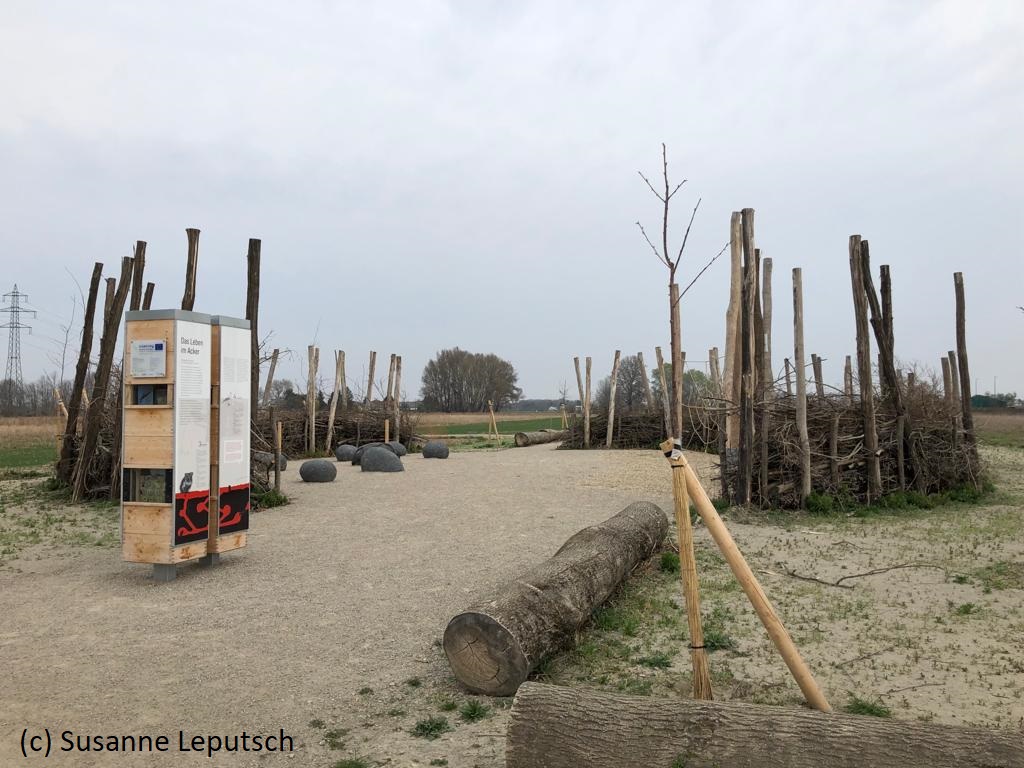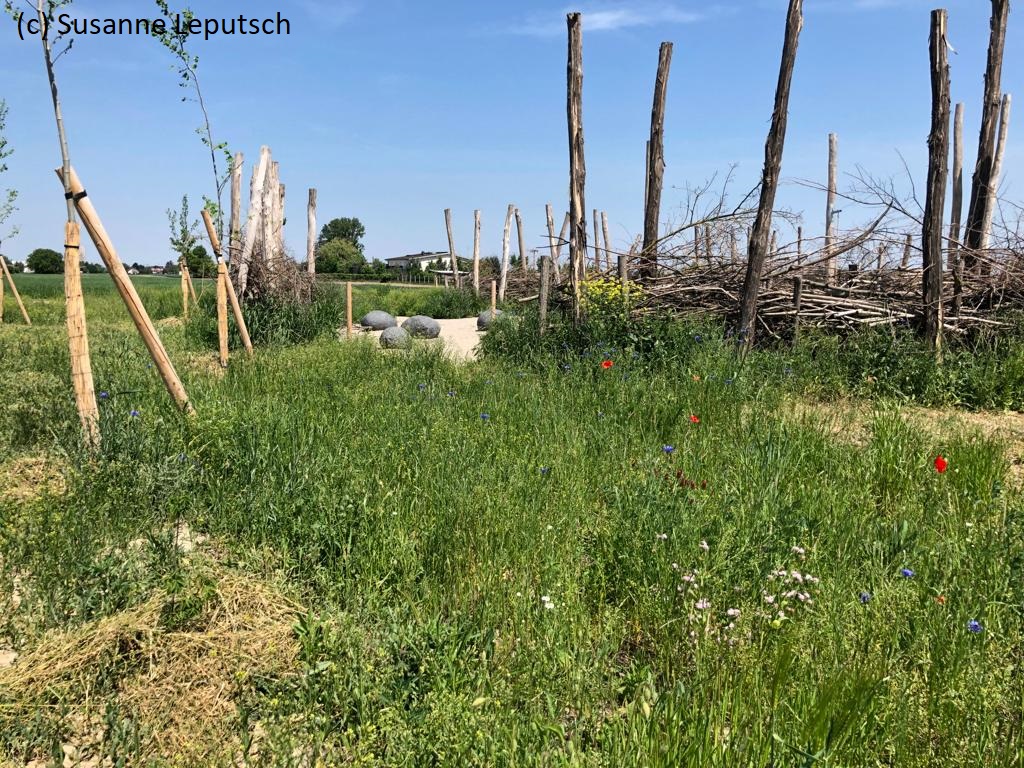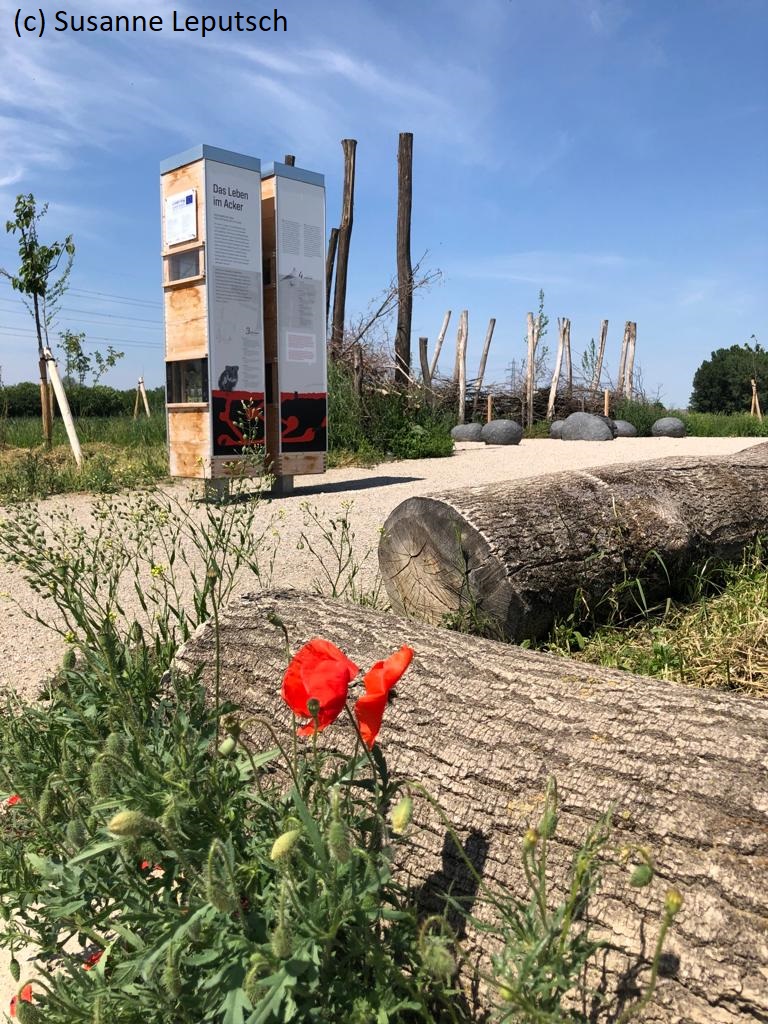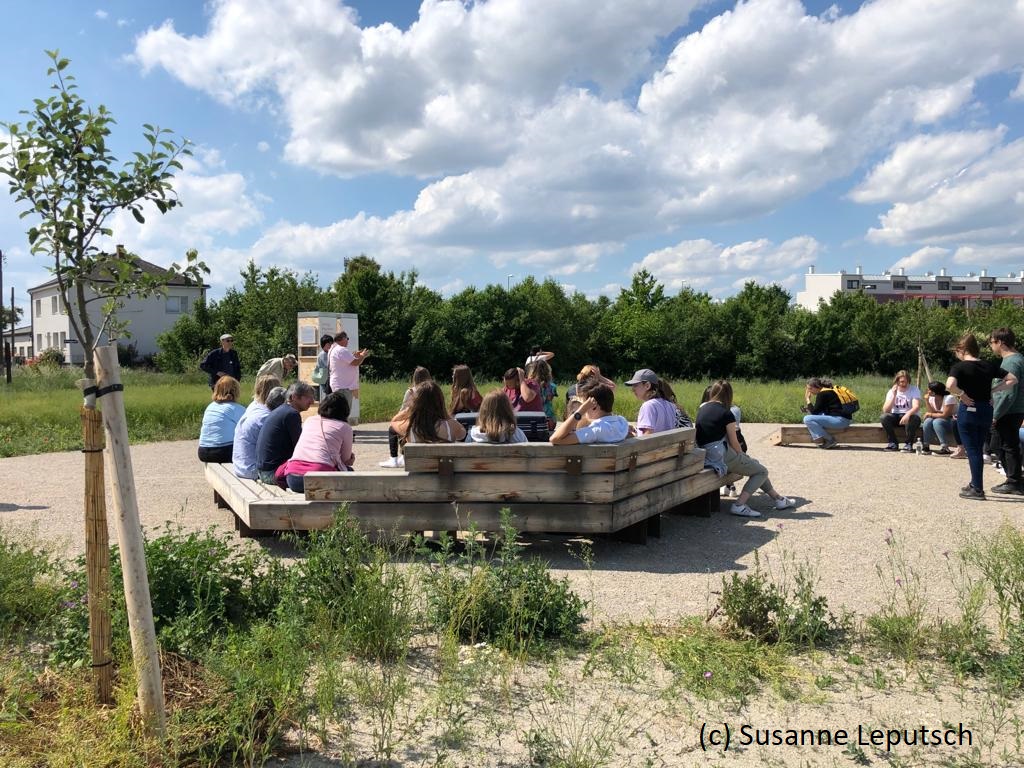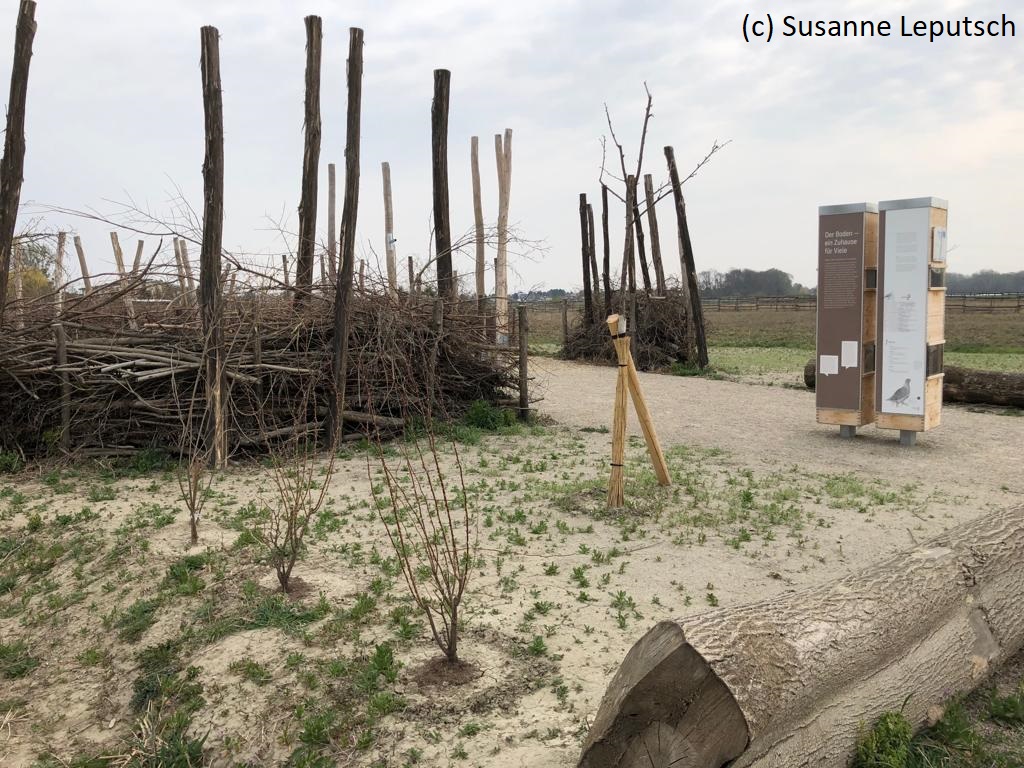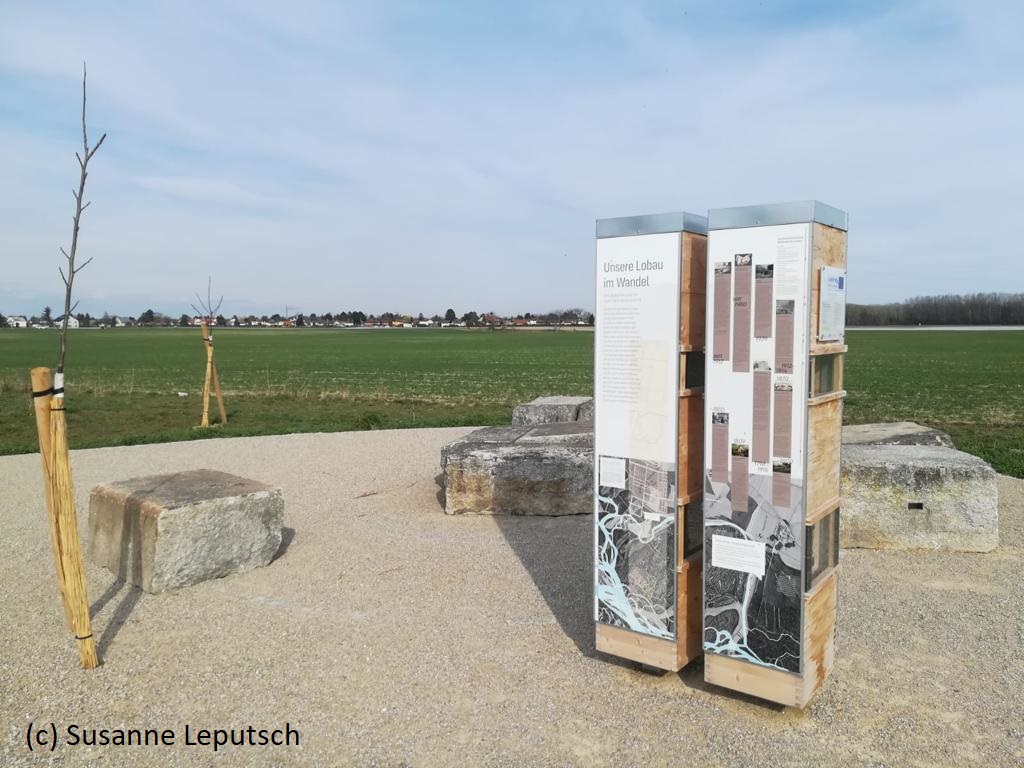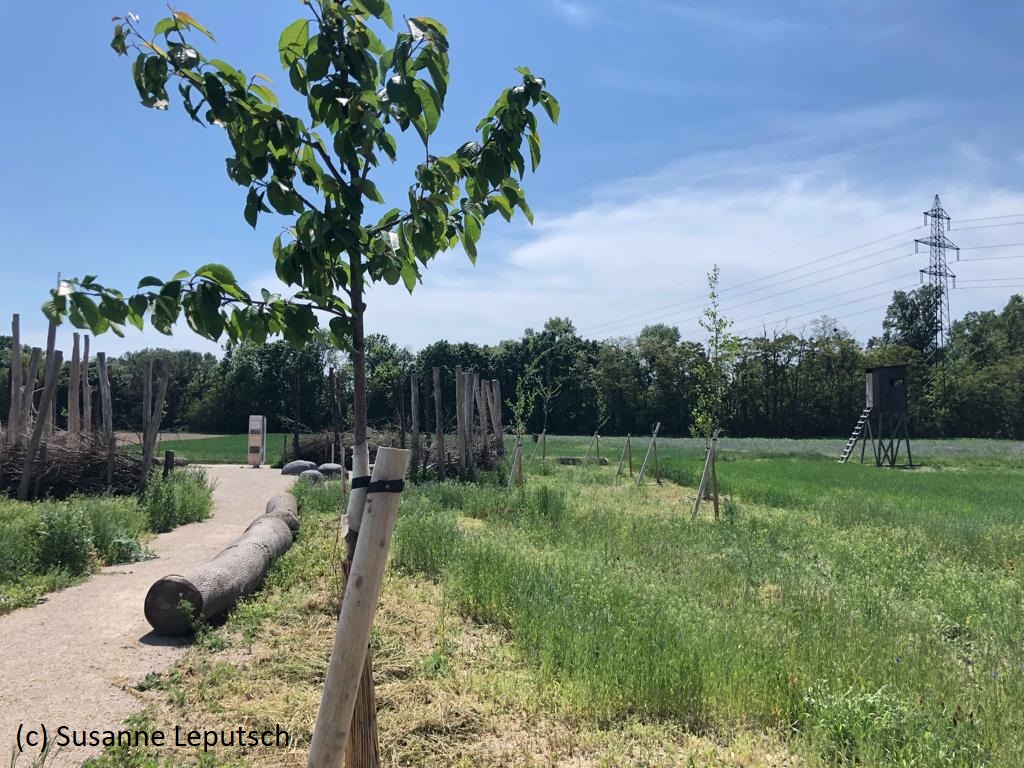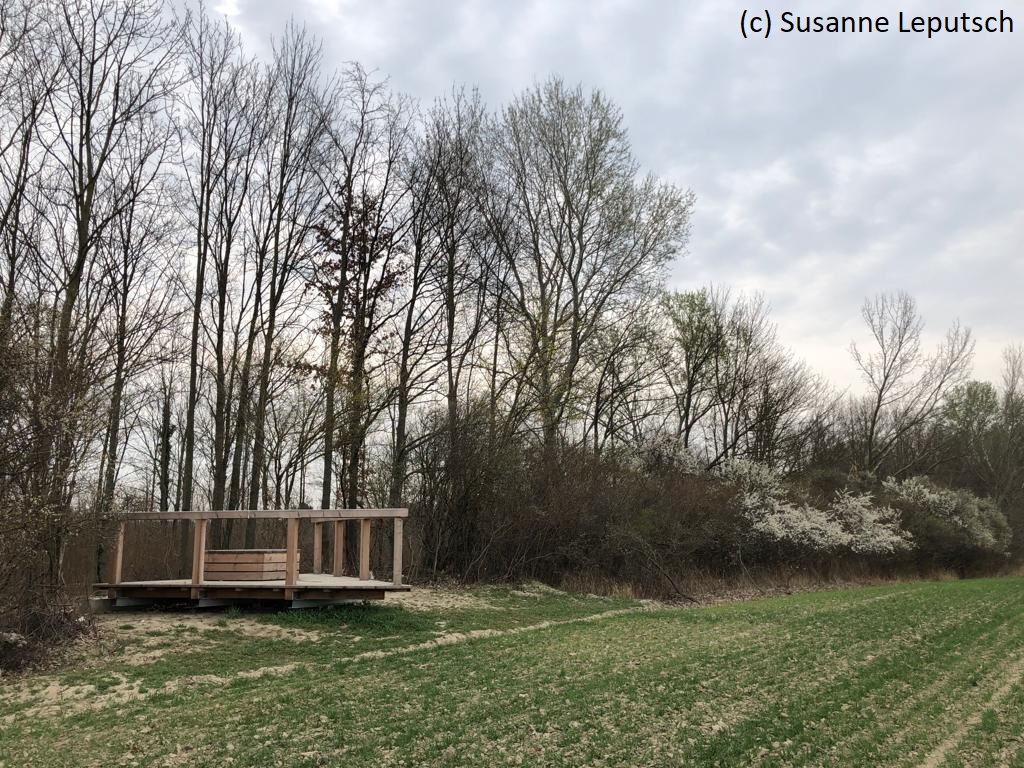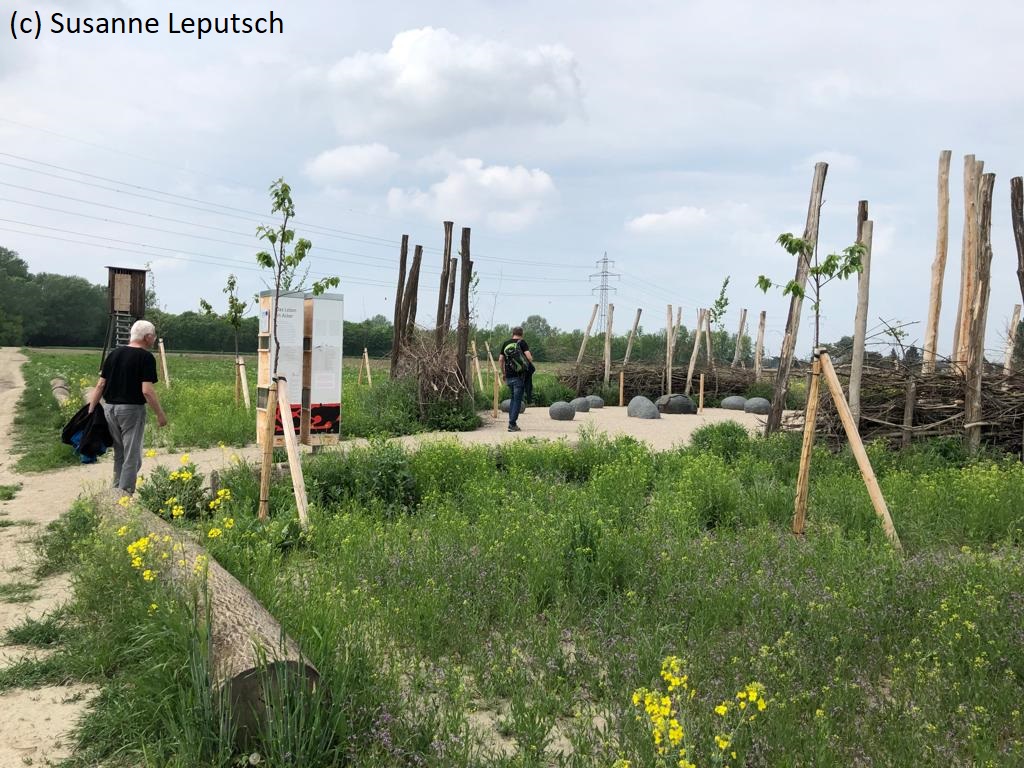Recharge your strength, look, marvel & play at the resting places in the Fields of Diversity
The "Fields of Diversity" raise awareness of biodiversity in a varied organic field landscape. They are located outside the Danube Floodplains National Park, well situated to buffer the visitor pressure of the densely populated city of Vienna.
Grey geese and other birds breeding at the edge of the forest can be spotted at the "Feldblick" resting place. Visitors look out of the forest onto a wide field. It is precisely these marginal situations between fields and neighbouring habitats, whether forest, hedge, meadow, body of water or fallow land, that are of enormous importance for biodiversity.
Binoculars and old survey maps provide a "wide-angle view" at the rest stop of the same name. Visitors are invited to learn about the history of the cultural landscape, for example the 200 years of agricultural use or the course of the Danube regulation. The seats are granite stones with a very special history: they are relics of the old Vienna Reichsbrücke, which collapsed in 1976.
Children and all other young-at-heart guests will love the "Bird's Nest": When they come to visit, they enter an oversized bird's nest made of robinia trunks and shrubbery. Like birds' eggs, round basalt nodules from the extinct Pauliberg volcano lie in the nest for sitting and climbing. Climbing blackberries and wild vines will sustain the nest by themselves in the future. Those who have rested enough, or had a good romp on the climbing net, can learn about ground-nesting birds such as the partridge or skylark.
At the "Insect Oasis" station, visitors can learn how meagre meadows, wild shrubs, apple trees and other plant cultures contribute to the abundance of insects and see for themselves. The station is located very close to Bioforschung Austria.
The fields of diversity were planned by landscape architect Heidelinde Holzinger and carefully laid out and constructed by a large team. In order to offer insects and other animals flowers, fruits and hiding places all year round, employees have sown rough pastures and planted wild shrubs. As far as possible, the plants come from regional wildflower seed propagation, organic tree nurseries with partly old varieties.
85% EU funding for the overall AgriNatur AT-HU project enabled the planning and construction of the four recreation sites. The objectives were to explore the interaction between nature conservation and agricultural use and to develop ways to conserve, promote and showcase biodiversity.
For anyone who wants to get to know this diversity better in the so-called "New Lobau" in the Lobau foreland, or who simply wants to play in an oversized bird's nest, the Fields of Diversity are a must-visit!

